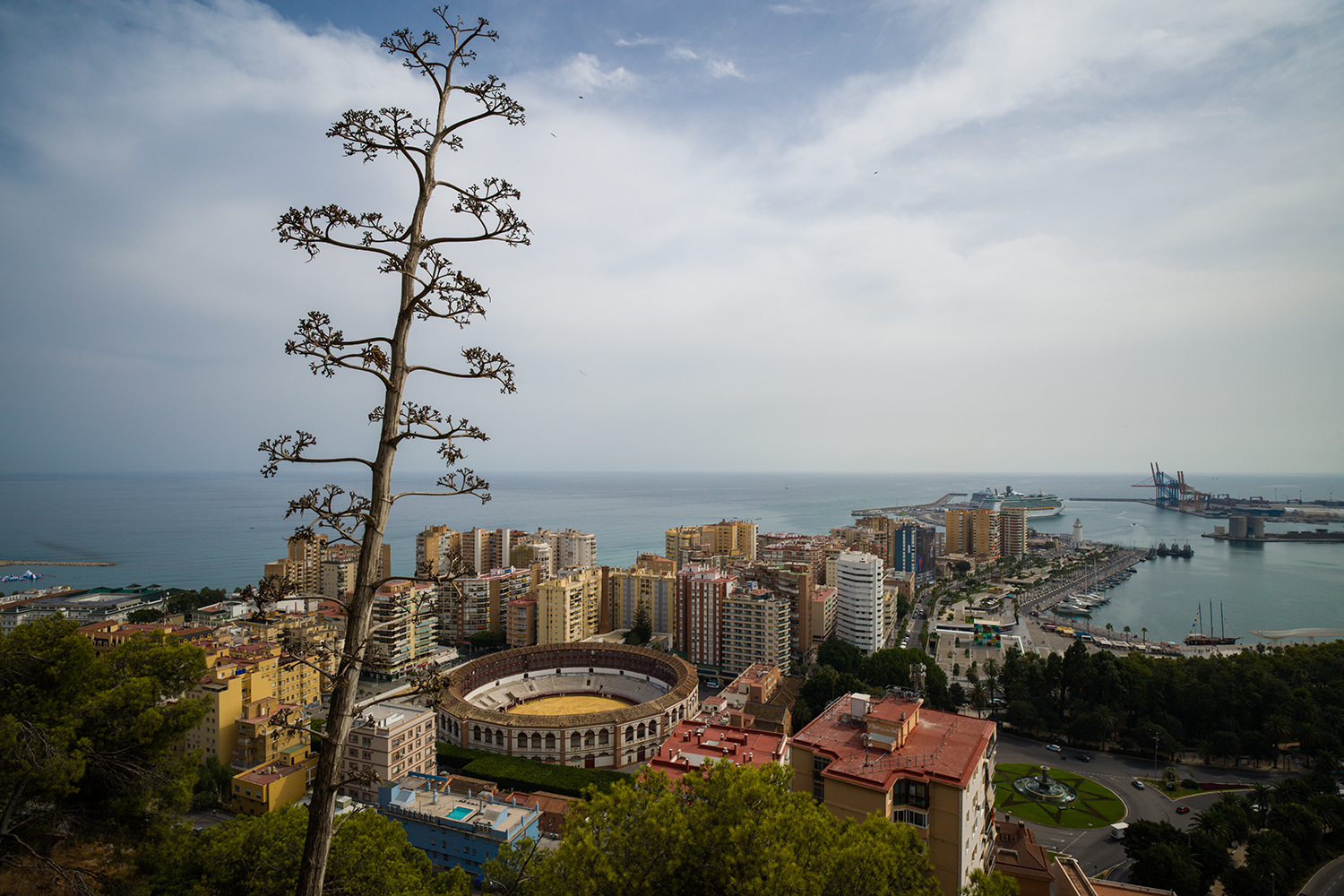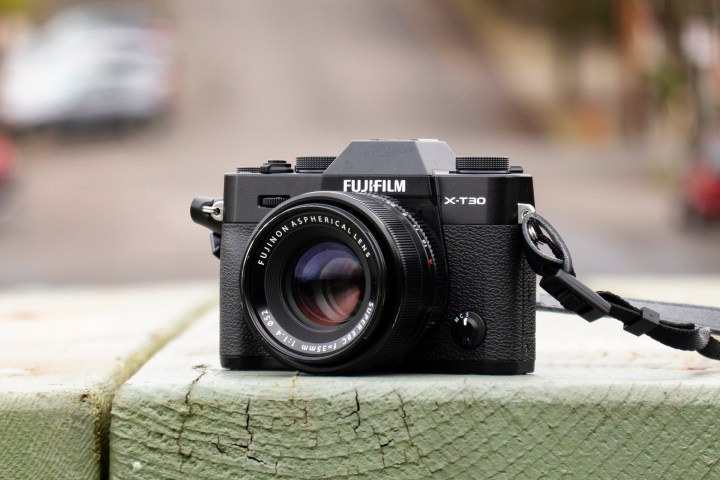Lush forests, rushing waterfalls, and epic sunsets are subjects that never get old. Landscape photography is all about setting up the shot and taking the time to get it right, but having the best camera for the job certainly doesn’t hurt. While any camera can take a solid landscape shot, our money-is-no-object pick for the best is the Hasselblad X1D II 50C. Armed with a 50-megapixel medium-format sensor, it delivers exceptional detail and dynamic range.
You might be wondering why we didn’t pick the 100MP Fujifilm GFX 100, a fellow medium-format camera. While the extra resolution is nice, we don’t think it’s imperative, and the GFX’s other killer feature — in-body image stabilization — doesn’t matter when the camera is on a tripod, which is common for landscape work. The GFX is also quite a bit bigger and nearly twice as heavy, making it more difficult to travel with. And while we did say money is no object, it’s hard to ignore the GFX 100’s price, which is several thousand more than the X1D II.
Any medium-format camera is going to set you back a pretty penny, though. Fortunately, if you’d rather not open a new credit account, there are some less expensive options in full-frame and crop-sensor cameras that are still excellent for landscapes.
After something a bit different? Check out our collection of the best Black Friday camera deals and best GoPro deals.
At a glance:
- Best landscape camera overall: Hasselblad X1D II 50C
- Best full-frame landscape camera: Panasonic Lumix S1R
- Best landscape camera for travel: Olympus OM-D E-M1 Mark III
- Best landscape camera on a budget: Fujifilm X-T30
The best: Hasselblad X1D II 50C

Why should you buy this: Excellent dynamic range, tack-sharp lenses
Who’s it for: Professionals and anyone who wants the absolute best.
Why we picked the Hasselblad X1D II 50C:
When it comes to medium-format imaging, no other camera company has a pedigree like Hasselblad’s. The Swedish company’s cameras and lenses have been used everywhere — including the moon. Historically, Hasselblad cameras weren’t exactly known as compact or portable, but the relatively new X series sought to change that. This is partly what makes the X1D II 50C such a good landscape camera — it’s actually light enough that you won’t mind backpacking with it.
At the core of the X1D II 50C is a tried-and-true 50-megapixel sensor with about 70% more surface area than a full-frame camera. It’s the same sensor as used in the first X1D 50C (and a few other medium-format cameras) but it continues to be a top performer to this day. In fact, it is the number one sensor in DxO Mark’s imaging test database, thanks to excellent performance in all categories. That means lifelike color, broad dynamic range, and low noise at high ISOs.
Our author had the chance to shoot the original X1D, complete with the exceptional 21mm f/4 lens, on a trip to Spain. It blew him away.

The main improvements in the X1D II have to do with speed and performance, but it remains a rather slow camera compared to the Sonys, Canons, and Nikons of the world. Personally, we never found the lack of speed to be an issue for shooting landscapes, however — in fact, it can even be a benefit. This is a camera that encourages you to put more time into your exposures, and when you do that, you inevitably end up with a better shot.
There are plenty of reasons why other photographers should not pick the Hasselblad X1D II, but if your passion is landscapes, we can’t imagine a camera that will make you happier. That is, of course, if you can afford it.
Read our Hasselblad X1D II 50C review.
Best full-frame landscape camera: Panasonic Lumix S1R

Why should you buy this: 188MP high-resolution mode, rugged durability
Who’s it for: Photographers who need a great landscape camera that can easily switch to other tasks.
Why we picked the Panasonic Lumix S1R:
When Panasonic jumped into the full-frame mirrorless arena in 2018, it did so with a very different approach compared to its rivals. The Lumix S series is all about ruggedness and control at the expense of size and weight, which would seem to limit it to a relatively small niche of photographers. Compared to a Sony A7R IV or Nikon Z 7, two other high-resolution mirrorless cameras, the S1R is almost laughably large. Atop a sturdy tripod, however, it’s a force to be reckoned with.
The S1R is built around a 47-megapixel full-frame, which runs neck-and-neck with the top full-frame sensors on the market. It doesn’t quite match the resolution of the A7R IV, at 61MP, but the real-world difference isn’t that big, with both cameras able to produce very large prints with stunning detail. And if you truly need to maximize detail, you can use the S1R’s high-resolution pixel-shift mode, which takes a series of eight exposures, shifting the sensor slightly between each, and combines them together for a mind-boggling 188MP.

Yes, the Sony A7R IV also has a similar pixel-shift mode — which goes up to 250MP — but unlike the Panasonic, it can’t combine the frames in-camera. The S1R gives you a single RAW or JPEG file that you can view in-camera or easily transfer to your image editing software of choice without having to run it through any proprietary software first. We also have a hard time imaging when we could possibly need more than 188MP.
It doesn’t hurt that the Panasonic Lumix S1R has arguably the most flexible and customizable control layout of any mirrorless camera and is built to handle the elements. A little rain or snow will not slow it down, making it a great camera for adventurous photographers — so long as you can live with the weight.
Read our Panasonic Lumix S1R review.
Best landscape camera for travel: Olympus OM-D E-M1 Mark III

Why should you buy this: Compact, lightweight, with a 50MP high-resolution mode
Who’s it for: Anyone who wants solid landscape performance they can take anywhere.
Why we picked the Olympus OM-D E-M1 Mark III:
Don’t let the OM-D E-M1 Mark III’s small size fool you — this is a very capable camera built for enthusiasts and pro photographers. Thanks to its relatively small Four Thirds sensor, lenses for the E-M1 are significantly downsized compared with their full-frame (or medium-format) counterparts. This makes the E-M1 a great choice for photographers on the move and is, in fact, our pick for the best travel camera.

But the reason the E-M1 is also a great landscape camera has to do with its 5-axis sensor-shift stabilization. Similar to the Lumix S1R, this allows for a pixel-shift high-resolution mode that combines eight exposures into a single image with extra resolution. So while the E-M1’s sensor only serves up 20 megapixels, it can output 50MP JPEGs and even 80MP RAWs using the high-resolution shot mode. Beyond resolution, this mode helps improve dynamic range by pushing the noise lower compared to a standard photo, helping the E-M1 make up for some of the deficiencies of its smaller sensor.
The E-M1 Mark III also adds a handheld high-resolution mode that wasn’t present on previous E-M1 models. Even without a tripod, you can now take advantage of multi-shot high-resolution images, another feature that comes in handy for the traveling photographer who needs to pack light.
Read our Olympus OM-D E-M1 Mark III review
Best landscape camera on a budget: Fujifilm X-T30

Why should you buy this: Flagship performance at an affordable price
Who’s it for: Anyone who wants solid image quality without breaking the bank.
Why we picked the Fujifilm X-T30:
The X-T30 keeps showing up on best camera lists, and for good reason. It’s hard to think of another camera that offers as good of a value proposition. It houses the same sensor and processor as the much more expensive Fujifilm X-T3, but in a compact body with simplified controls that make it more approachable to the novice photographer.
The 26MP X-Trans APS-C sensor won’t outperform the full-frame and medium-format cameras on this list when it comes to resolution, but it still holds its own when it comes to color and dynamic range. That’s what really makes the X-T30 a solid choice for landscape photographers, as it captures a broader range of detail from shadows to highlights compared to its peers in this size and price bracket.

The other thing helping the Fujifilm X-T30 is a couple of excellent wide-angle zoom lenses. Both the Fujifilm XF 10-24mm F4 and 8-16mm F2.8 are stunning — if not exactly cheap. Or, for photographers who want to travel light, the XF 16mm F2.8 is a low-profile, wide-angle prime lens that adds a barely perceptible 5.5 ounces to the camera.
Read our Fujifilm X-T30 review.
What is dynamic range?
Dynamic range refers to the range of brightness a camera can capture before detail is “clipped,” meaning either too dark or too bright to register. Dynamic range is important in landscape photography because there is often a significant difference between the brightest and darkest areas of the image, and you can’t use flash to fill in the shadows like you could with a portrait.
Cameras measure dynamic range in the relative unit of “stops.” An increase of 1 stop means doubling the brightness. The best cameras have a dynamic range approaching 15 stops. To take advantage of your camera’s full dynamic range, make sure you are shooting in RAW.
You can capture even greater dynamic range by bracketing exposures for a high-dynamic range (HDR) composite, which combines several photos shot at different exposure settings to maximize detail throughout the full tonal range of the scene.
Editors' Recommendations
- Best drone deals: Get a cheap drone for $47 and more
- The best free photo-editing software for 2024
- Fujifilm’s most-hyped camera has just started shipping
- How to use (almost) any camera as a webcam for Zoom and more
- Best Sony A7 III deals: Save $300 on the full frame mirrorless camera




